Mandala Ensemble
Mandala South Asian Performing Arts is a MacArthur award-winning organization, founded by Executive Artistic Director Pranita Nayar. From classical to contemporary, Mandala Arts offers audiences an evocative exploration of the dance, theatre and music forms of South Asia.
Mandala performances connect to ancient, classical traditions that evolve into the lived experiences of diaspora artists. The Ensemble is dedicated to sharing cultural exchanges and experiences that bring its far-ranging aesthetics and vocabularies into the work.
Download Press Kit
Dance
Mandala’s Dance Ensemble lives in the world of dance, theatre and its storytelling capabilities. Our projects and choreography hold connections to ancient and cultural traditions, ranging from classical techniques to social dances. These artistic practices evolve into the lived experiences of diaspora artists. These forms include Bharatanatyam, Odissi, Kuchipudi, Kathak, Balinese, Khmer Apsara, Ballet, Contemporary, Hip Hop, House, Jazz, Kandyan, Mohiniyattam, Kathakali, Bollywood and Gharba.
Our Dance Ensemble is dedicated to building cultural exchanges through collaborative processes. The artists bring their far-ranging aesthetics and vocabularies into the work. Allowing our audiences and communities to experience this journey through productions, performances and our outreach programs.
Mandala’s Dance Ensemble has presented work at Chicago Symphony Center, Harris Theater, Logan Center for the Arts, North Shore Performing Arts Center, the Art Institute of Chicago, Risikala School in Kandy, Sri Lanka, and internationally through virtual programming.
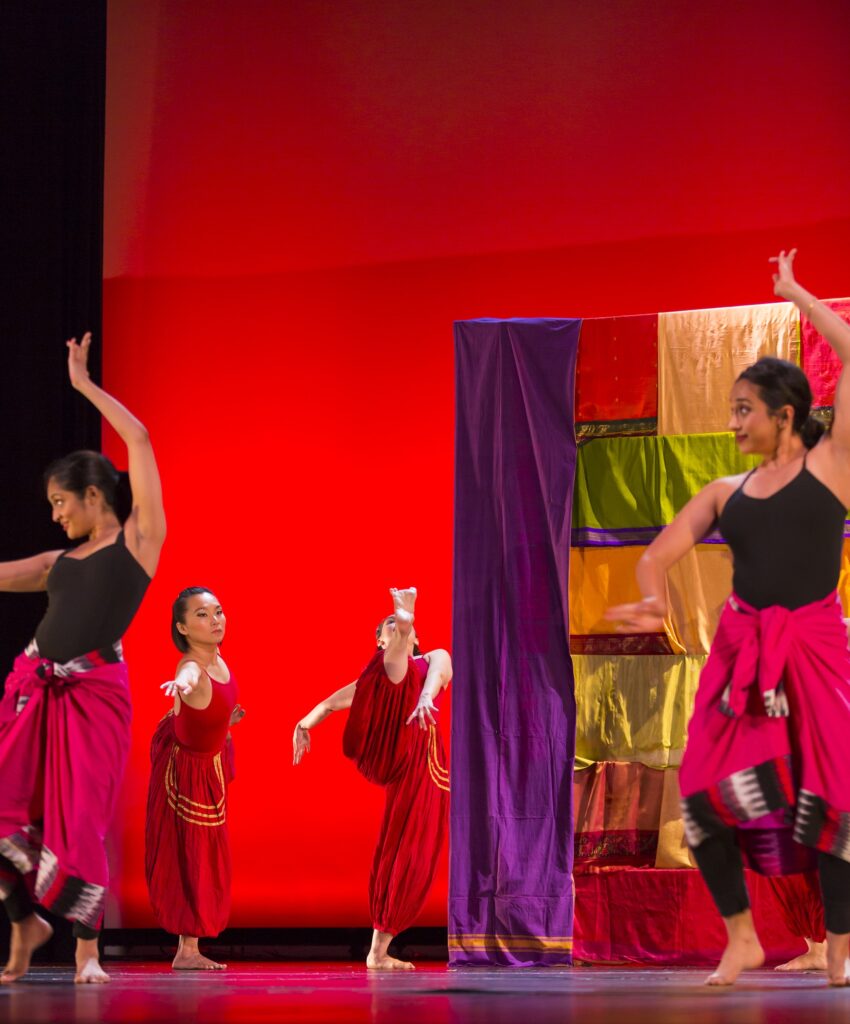
Music
Mandala’s Music Ensemble performs classical and folk music from the south Asian diaspora representing a rich history in music heritage and sound. Curated to tell a narrative of shifting histories and spaces, Mandala’s musicians are masterful in their knowledge and technical skill of their music and present cultural exchange through performance.
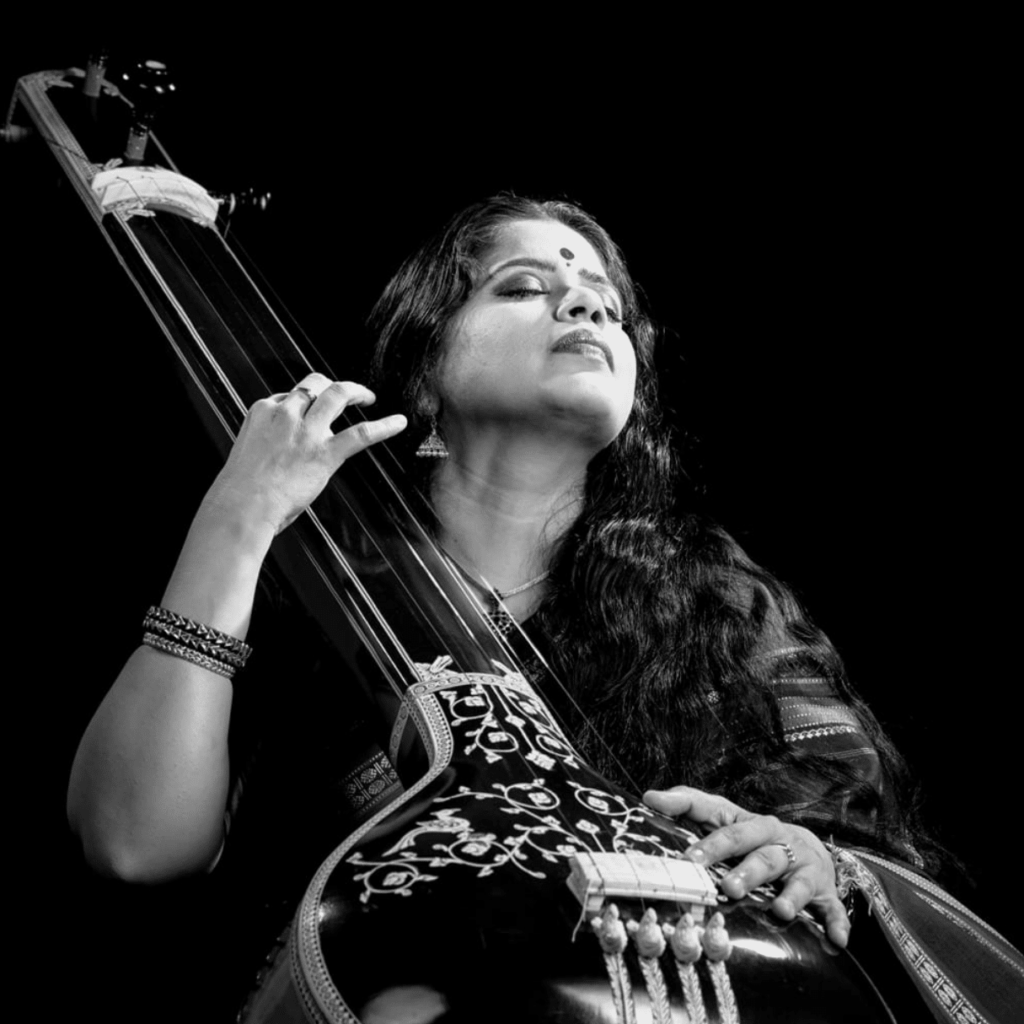
Sudha Raghuraman – Vocalist, Carnatic & Hindustani
Sudha Raghuraman was born into the distinguished O.S. family of musicians, Sudha was surrounded by the pulsating musical atmosphere at home; her formative years were the ideal ground for listening by listening. With her superlative training under her eminent gurus and family—Shri O.V.Subramanyam, Shri O.S.Sridhar, Sri O.S.Thiagarajan and Sri O.S.Arun—Sudha brings to Carnatic music her own unique sensibility. Gifted with a rich, sonorous voice, Sudha’s unique forte lies in her effortless delineation of rare, complicated ragas, often with Hindustani dimensions. A widely traveled artist, Sudha’s creative flair has found expression in her role as a music composer for several dance productions. She has more than 200 recordings to her credit. Sudha is based in New Delhi.
Sandeep Bharadwaj – Violinist, Carnatic
Sandeep Bharadwaj is a disciple of Padmabhushan Sangeetha Kalanidhi A. Kanyakumari. He is a world record holder on the violin and has performed over 400 concerts to date at prestigious venues such as Chicago’s Millennium Park, the Madras Music Academy, Narada Gana Sabha, and the Cleveland Thyagaraja Aradhana. Sandeep has won numerous accolades for his violin performances, including the Yuva Shree Kala Bharathi award in 2008, the National Talent Concert Competition Winner in 2010, and many more.
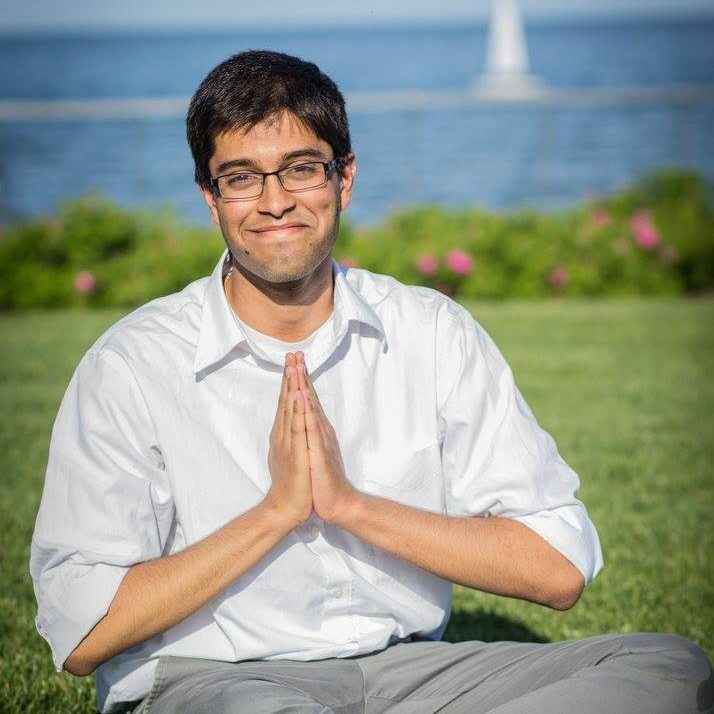
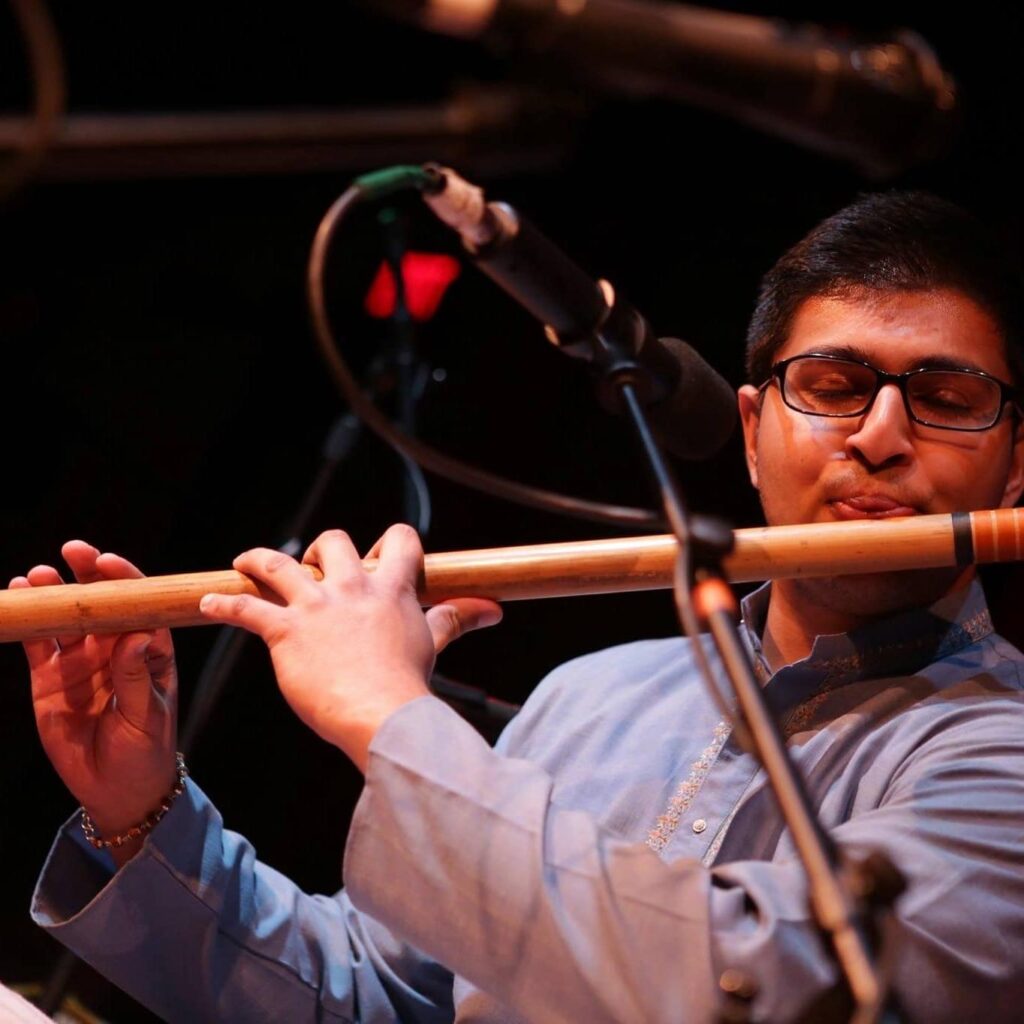
Chethan Anant – Bansuri (flute), Carnatic
Chethan Anant has been studying the Bansuri (Indian flute) since 2007. He is a trained vocalist and percussionist; a multifaceted concert player. He won first place in the Swarganga Crescendo National Hindustani Music competition in 2014 and in 2016, he was selected as an IndianRaga fellow. Chethan has performed at various venues and organizations across the United States including the Pt. Kashinath Bodas Music Festival in Phoenix, Arizona, the Carnatic Hindustani Music Circle in Boston, the Michigan Sangeetha Natya Academy, the South Asian Classical Music Society, and numerous other events in and around Chicago. He has performed in India in Bangalore, Mumbai, Hyderabad, and Pune. He also teaches music in the Chicagoland area, offering a traditional music learning experience, with a new generational perspective.
Chamni Sriparam -Thai Percussion, Thai Classical Music
Chamni Sripraram has been teaching Thai music for over 25 years with passion and enthusiasm. In addition to teaching at TCFAI, he is also a world music professor at Northern Illinois University teaching a class called: “Music of Southeast Asia.” In the past three years, his students have performed in prestigious concert halls such as at the Thai Airways Company, UCLA, and NIU.
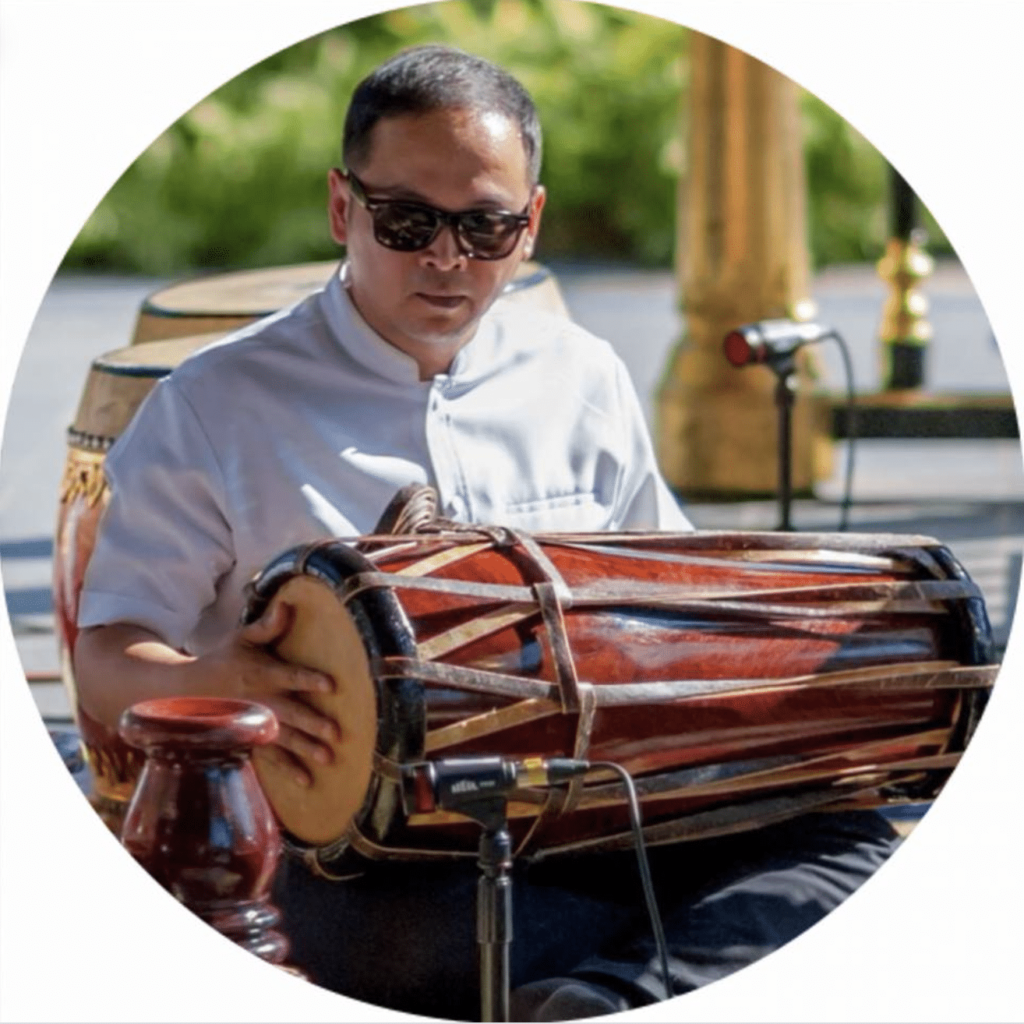
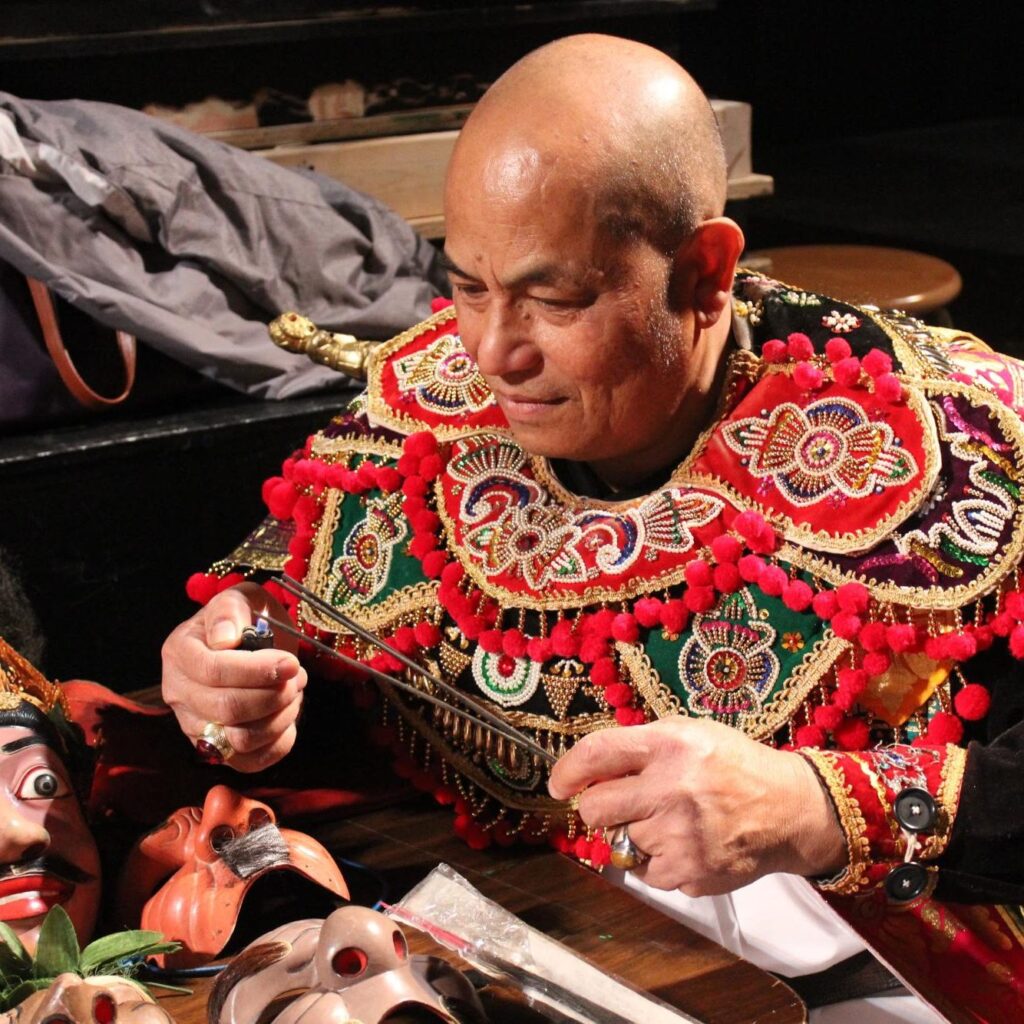
I Gusti Ngurah Kertayuda – Indonesian Gamelan, Indonesian Gamelan
I Gusti Ngurah Kertayda is a graduate of the National Performing Arts Institute (KOKAR) in Denpasar, Indonesia. He has taught and performed traditional and modern dance and gamelan since the 1970’s both nationally and internationally for numerous dignitaries and festivals. Since his relocation to the United States in 1989, he has served as the artistic and choreographic dance director for the Indonesian Consulate General of Chicago and has just retired from this position in December 2012. He is now the director of Indonesian Dance of Illinois, a non-profit organization in the greater Chicago area promoting Indonesian culture through dance and music.
Rajrang – Rajasthani Folk Music, Hindustani
Rajrang is a collective of folk musicians curated by Rupayan Sansthan (The Rajasthan Folkloric Institute) in Jodhpur, India. Two professional hereditary caste musician communities – the Langas and the Manganiyars – share oral histories, folklore and divine poems through music. While these musical lineages are ancient, their music and storytelling has evolved over the centuries and now presents as an eclectic canon of Hindu mythology, Sufism and ancestral anecdotes. While Rajrang presents folkloric traditions are truly steeped in the sands of the Thar desert, its artists have collaborated with international celebrities including Zakir Hussain and Yo-Yo Ma, and have toured the world’s greatest stages including Lincoln Center and the Smithsonian, and were the subject of the acclaimed production Manganiyar Seduction, directed by Roysten Abel.
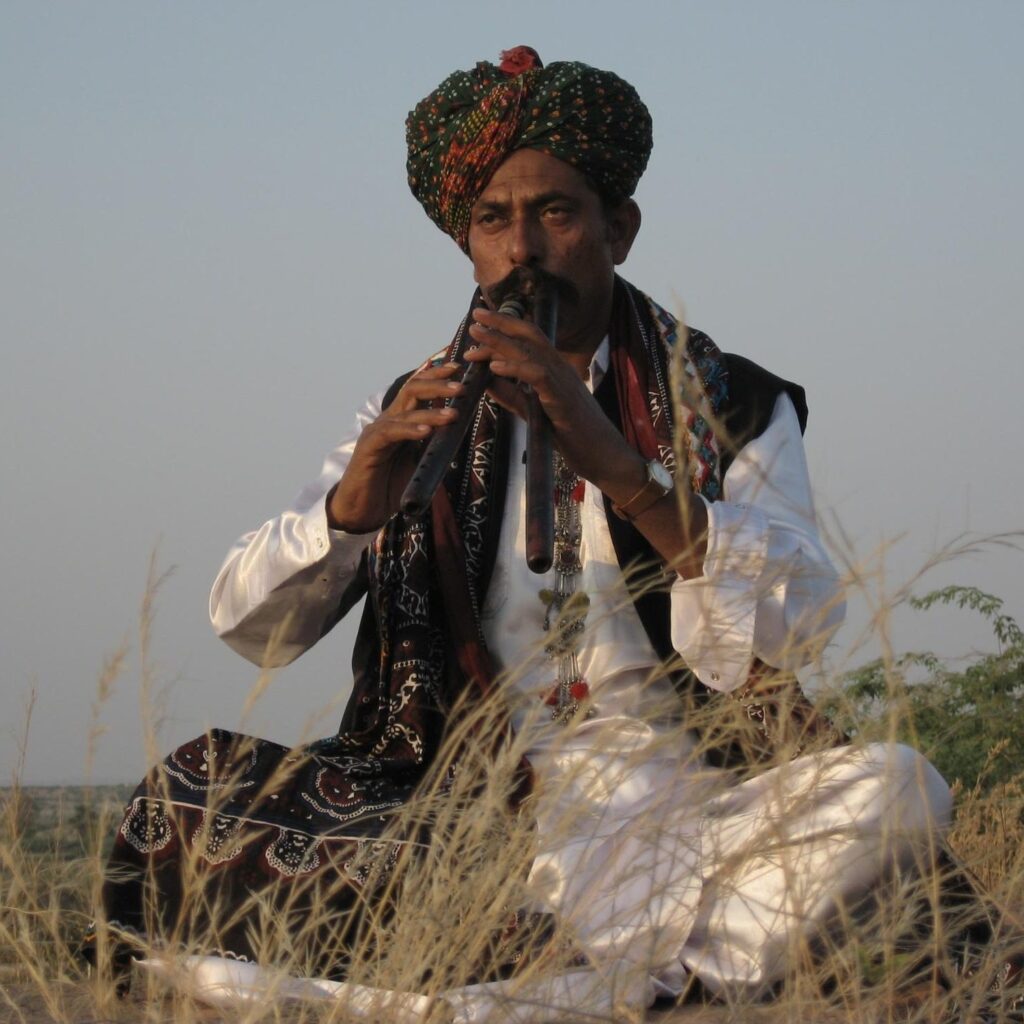
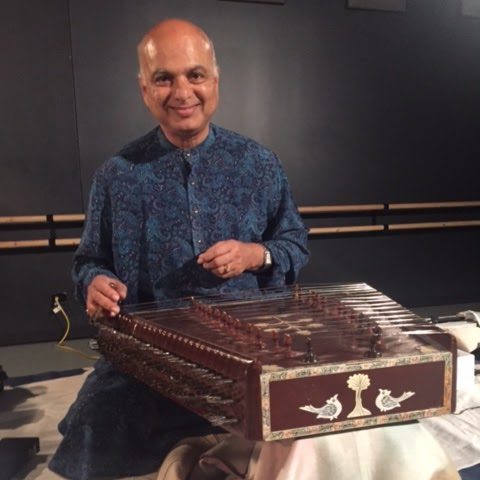
Satish Vyas – Santoor, Hindustani
Pandit Satish Vyas has been a regular concert artist for more than 30 years, performing and recording all over the world, more extensively in the USA, UK & Europe, Japan and Australasia. In 1997, he was the only non-Western instrumentalist invited to perform in Venice, Italy at the “Mostra Mozart Festival”, organised by the prestigious European Mozart Foundation. Vyas had also manifested his versatility by performing at EDINBURGH Festival and performing with the jazz/world music fusion group, “Silk”, accompanying Shankar Mahadevan, Shivamani, Louis Banks and Karl Peters at Barbican Centre (London). Renowned Santoor maestro Pandit Satish Vyas, blessed with a formidable musical background and training, thanks to both his father and his guru, continues to build an outstanding reputation as a soloist the Santoor (hammered dulcimer).
Amjad Ali Khan – Sarod,
He was all of 6 years old when Amjad Ali Khan gave his first recital of Sarod. It was the beginning of yet another glorious chapter in the history of Indian classical music. Taught by his father Hafiz Ali Khan, Amjad Ali Khan was born to the illustrious Bangash lineage rooted in the Senia Bangash School of music. Today he shoulders the sixth generation of inheritance in this legendary lineage. After his debut, the career graph of this musical legend took the speed of light, and on its way, the Indian classical music scene was witness to regular and scintillating bursts of Raga supernovas. Thus, the world saw the Sarod being given a new and yet timeless interpretation by Amjad Ali Khan. Khan is one of the few maestros who consider his audience to be the soul of his motivation. As he once said, “There is no essential difference between classical and popular music. Music is music. I want to communicate with the listener who finds Indian classical music remote.”
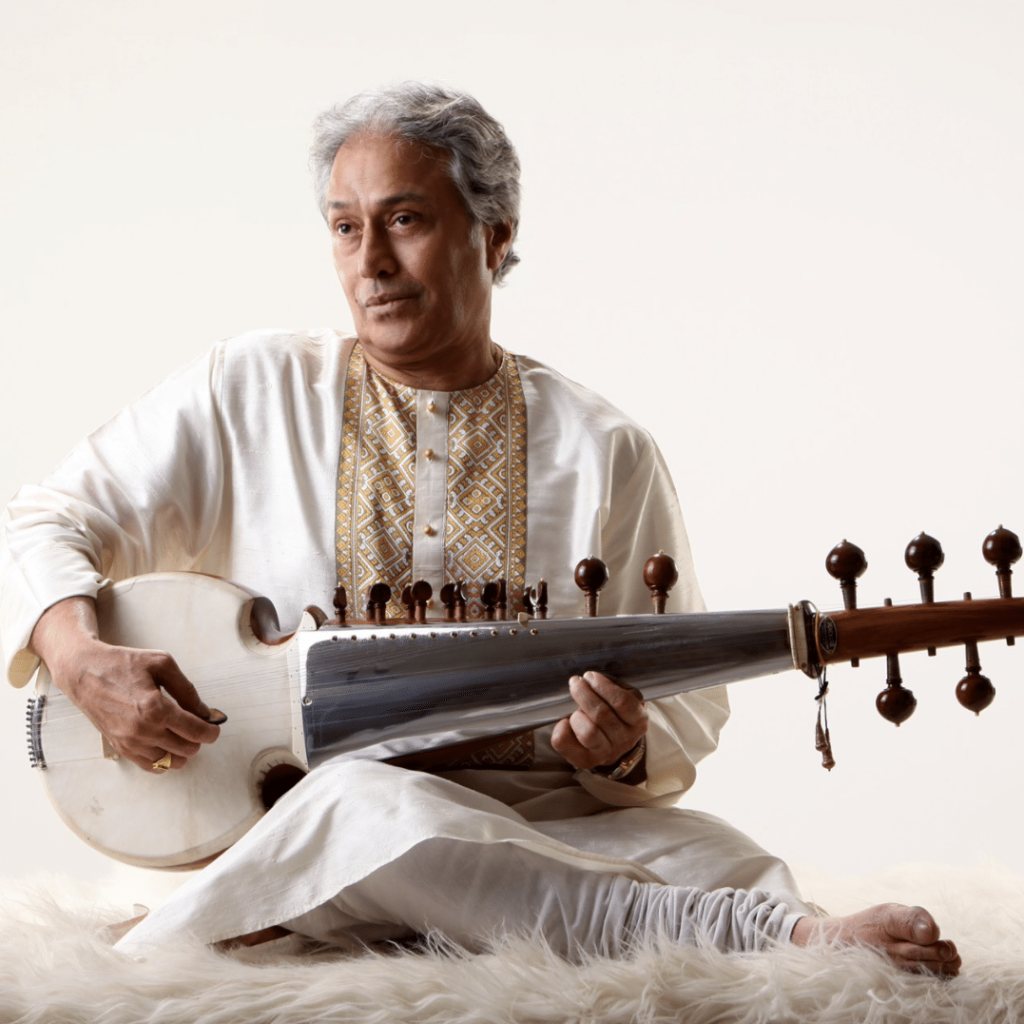
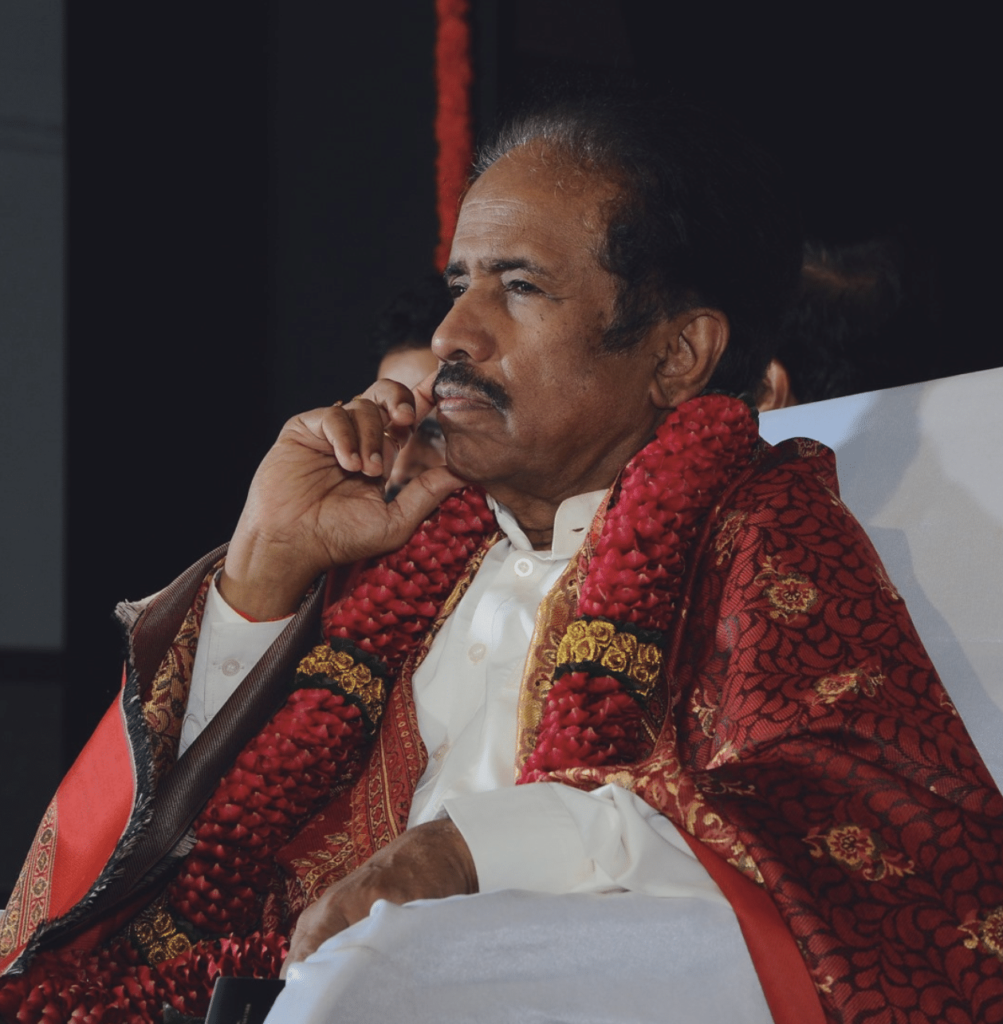
Dr. L. Subramaniam – Violinist,
Subramaniam, India’s violin icon, “The Paganini of Indian Classical music”, “the God of Indian Violin” is the serenity of an Indian musician combined with the magnetism of a western star. Constantly propelled from Singapore to Paris, from Delhi to Los Angeles, he has conquered every audience with the elegance and virtuosity of his style. His career as a childhood prodigy brought him into contact with the greatest musicians and he soon imposed himself as a master of the violin. At a very young age, he was honored with the title “Violin Chakravarthy” (emperor of the violin). No other musician can boast of such diverse repertoire and collaborations, or even such mind-boggling techniques. To date, Dr. Subramaniam has produced, performed, collaborated, conducted close to two hundred recordings.
MUSIC & INSTRUMENTS
Carnatic Music is one of the two main classical music genres of the South Asian subcontinent; its compositions are written in South Indian languages and are practiced in Southern India and Sri Lanka. The main emphasis in Carnatic music is on vocal music; most compositions are written to be sung, and even when played on instruments, they are meant to be performed in gāyaki (singing) style. The heptatonic scale is known to have its origins in Carnatic music, and later having been picked up by Pythagoras during his visit to India to learn mathematics, thus introducing it to the west. The circle of fifths and several other popular concepts in western classical music have their origins in the theory of Carnatic classical music.
Popular Instruments: Violin, Veena, Mridangam, Nadaswaram, Ghatam, Morsing
Hindustani Music is the second major musical genre of the South Asian subcontinent and is practiced in Northern India, Pakistan and Bangladesh. Hindustani music came into its own in 12 CE – it is distinctly influenced by Islamic, Sufi and Persian music traditions in Northern India – and diverged from Carnatic music. Hindustani music places more emphasis on improvisation and exploring all aspects of a raga, while Carnatic music is primarily composition-based. The central notion in both these systems is that of a melodic musical mode or raga, sung to a rhythmic cycle or tala. It is melodic music, with no concept of harmony. Hindustani classical music has become popular across the world through the influence of artists such as Ravi Shankar, Ali Akbar Khan, and Zakir Hussain and collaborations with global genres.
Popular Instruments: Sitar, Tabla, Harmonium, Sarod, Bansuri, Santoor, Sarangi, Pakhawaj
Indonesian Gamelan Music is the traditional ensemble music of Javanese, Sudanese and Balinese people of Indonesia and is made up predominantly of percussive instruments. Gamelan is used to accompany religious rituals, ceremonies, dance, dance-drama, traditional theater, wayang puppets theatre, singing, concerts, festivals, exhibitions, and many more. For most Indonesians, gamelan is an integral part of Indonesian culture.
Popular instruments: Kendhang, Kemanak, Gendèr, Gangsa
Thai Classical Music emerged 800 years ago in the royal centers of Central Thailand. Classical music ensembles and repertoires are influenced by older practices from India, but today are uniquely Thai expressions. While the three primary classical ensembles, the Piphat, Khruang Sai and Mahori differ in significant ways, they all share a basic instrumentation and theoretical approach. Each employs small Ching hand cymbals and krap wooden sticks to mark the primary beat reference. Thai classical music has had a wide influence on the musical traditions of neighboring Burmese, Laos and Khmer cultures.
Popular Instruments: Ching, Phin, Ranat Ek, Chakhe, So Dung
Bansuri is a side-blown flute originating from the Indian subcontinent. It is an aerophone produced from bamboo, used in Hindustani classical music.
Carnatic Violin is constructed the same as Western music, however, the tuning, playing posture, and techniques are quite different. The violin leans vertically on the neck or chest, with the scroll resting on the right foot. The bow is gripped by the wooden shaft with the thumb between the shaft and the hair. This posture allows for oscillations essential to the genre.
Gendèr is a type of metallophone used in Balinese and Javanese Gamelan music. It consists of tuned metal bars suspended over a tuned resonator of bamboo or metal. Each key is a note of a different pitch, and in some Gamelans two gendèrs are used, spanning multiple octaves.
Kendhang is a double-sided membrane drum that has one side larger than the other; it is usually placed horizontally on a stand while the musician is seated on the floor. Within Gamelan, the Kendhang keeps tempo, changes density and cues transitions in the music.
Phin is a type of lute with a pear-shaped body and played mostly by ethnic Laotians. It has frets on the neck over which two or three metal strings run that are plucked by a pick held in the right hand while playing.
Ranat Ek is a Thai musical instrument in the percussion family that consists of 21 wooden bars suspended by cords over a boat-shaped trough resonator and struck by two mallets. It is used as a leading instrument in the piphat ensemble.
Sarod is a stringed instrument, used mainly in Hindustani music on the Indian subcontinent. It is known for a deep, weighty, introspective sound, in contrast with the sweet, overtone-rich texture of the sitar, with sympathetic strings that give it a resonant, reverberant quality. A fretless instrument, it can produce continuous slides between notes known as meend (glissandi), which are important in Indian music.
Santoor is a trapezoid-shaped hammered dulcimer, and a variation of the Iranian Santur.[1] The instrument is generally made of walnut and has 25 bridges. Each bridge has 4 strings, making for a total of 100 strings. It is a traditional instrument in Jammu and Kashmir, and dates back to ancient times.
Highlights
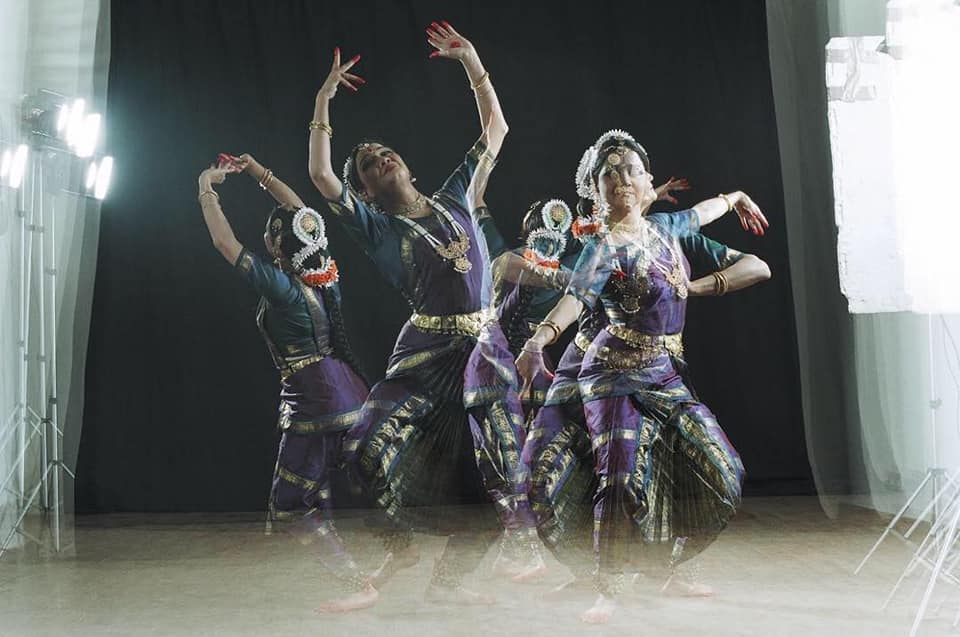
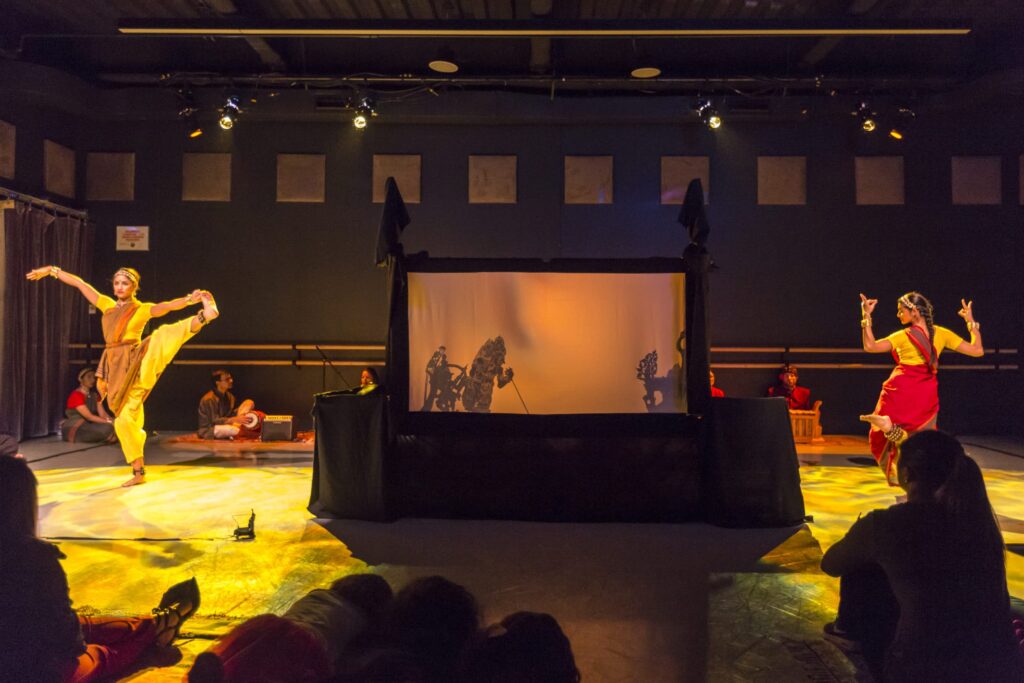
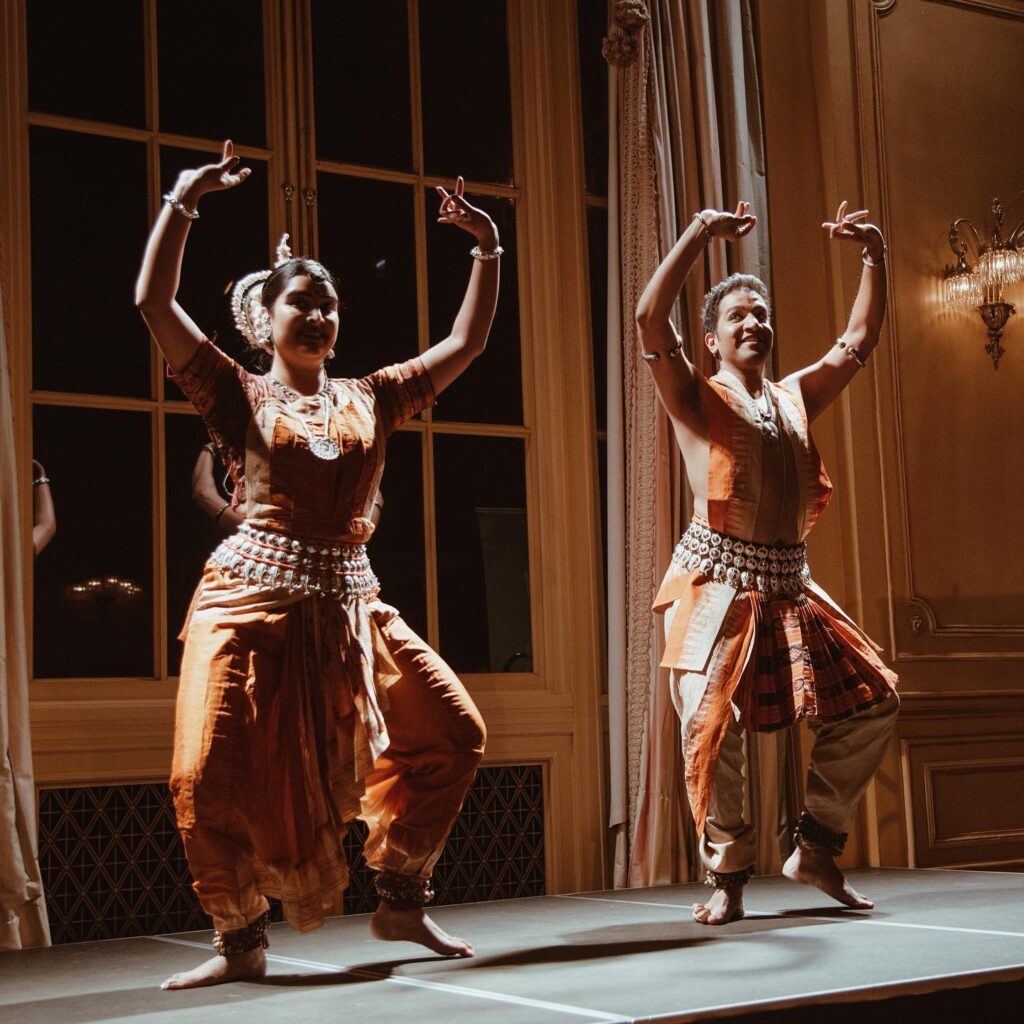
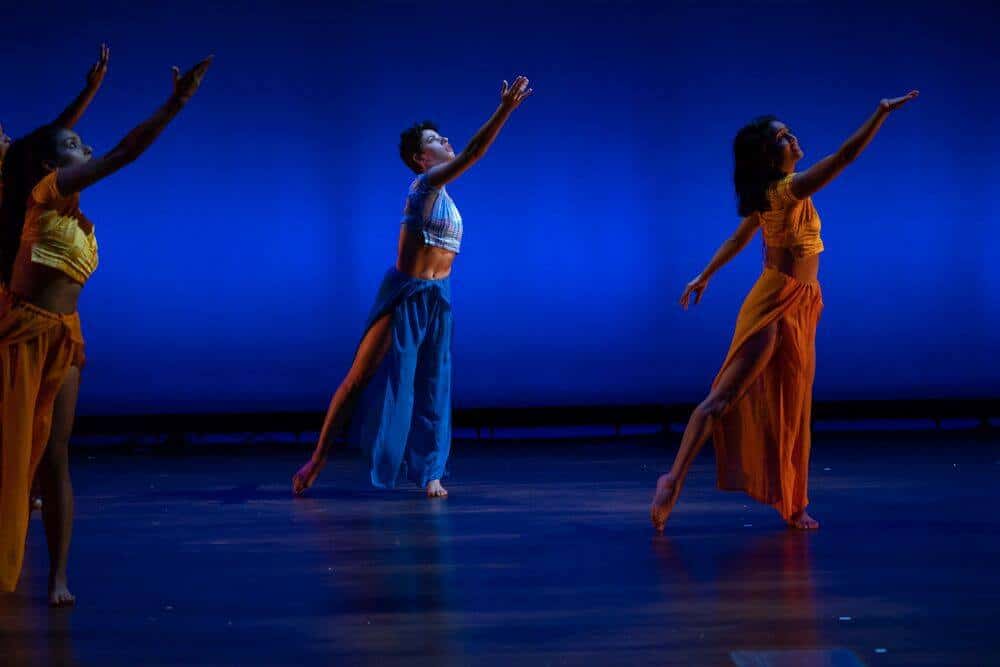
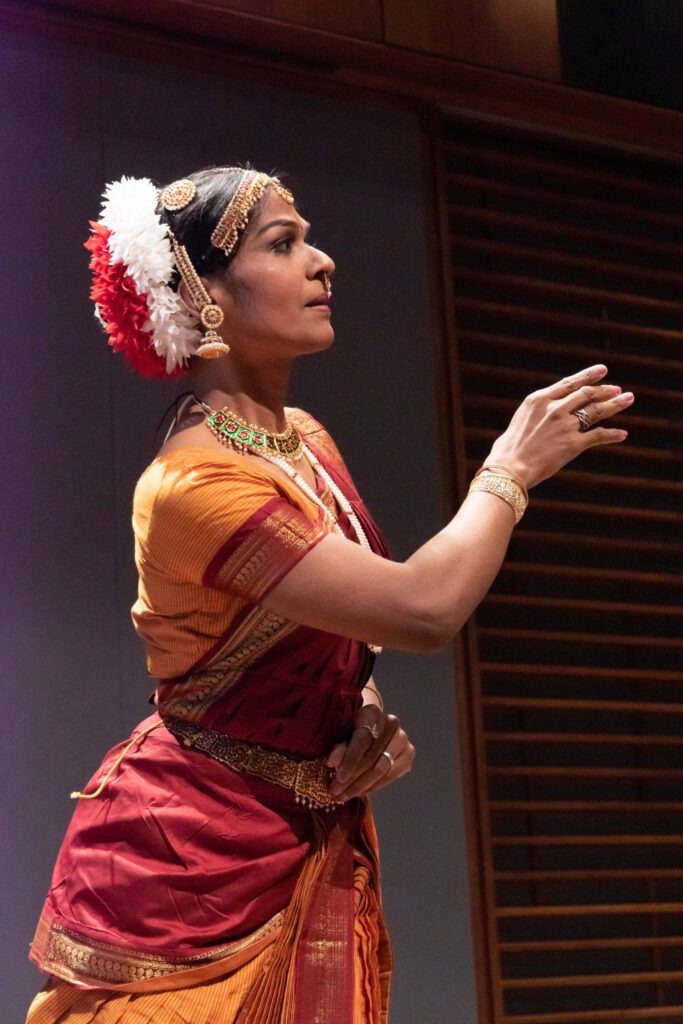
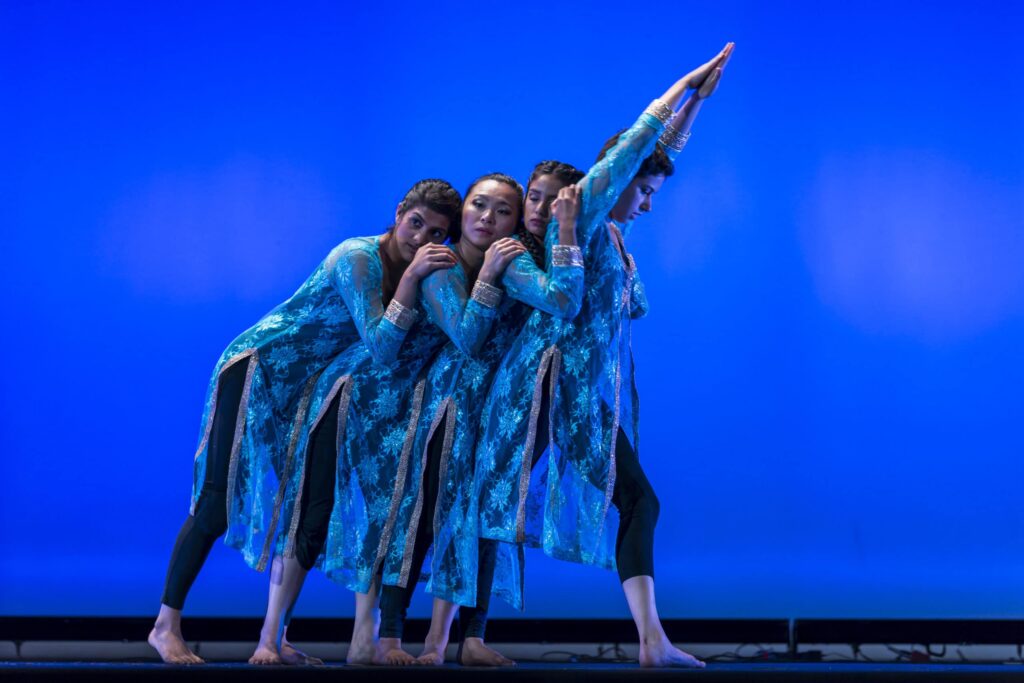
”Unwinding: a new body bhavam for Bharatnatyam” is a ground-breaking project that deconstructs the classical Indian dance form of Bharatanatyam. This work is the result of Pranita’s 30-year career in Bharatantyam education and presentation, investigating its origins and contexts. Applying modern concepts to the grounded sculpturesque and rhythmic qualities of Bharatantyam, Pranita finds triumphant playfulness and heart-warming self-discovery through her new movement. Set to field recordings of India’s rural communities, “Unwinding” is charged with new expression, derived from the elements.
“While I found myself again repeating that catchphrase about recontextualizing Indian dance for modern times leading up to the premiere of her newest evening-length work named after this process, “Unwinding” is actually accomplishing a deconstruction of Bharatanatyam like no other I’ve seen … the way Nayar is dismantling the form feels like a radical act, an “unwinding” of centuries of tradition, layers upon layers of meaning which are tightly tied to the cultural fabric and spirituality of the people of India in ways that Western concert dance forms have never been.” — Chicago Tribune
Three tales of Devi, the goddess, come to life. Balinese Shadow Puppets explore the demons and textures of South Asian mythology. Complimented with the expressive storytelling and rhythms of Bharatanatyam, this multi-dimensional spectacle will explore the significance of womanhood. “Beautifully merging traditional Balinese shadow puppetry performed by the dynamic and animated I Gusti Ngurah Kertayudahwith Bharata Natyam dance, this performance centers around the Goddess, Devi who combats the egotistical and power-hungry demon, Asura…Nayar creates an interesting staging with two dancers on one side of the shadow puppet theater, and soloist on the other.” — Dance Enthusiast
Mandala’s Traditional Repertoire invites audiences to experience an ancient visual storytelling tradition of South Asia: classical dance. Through striking and geometric shapes, complex rhythmic sequences, and evocative expressions of the face and hands (gestures), poetry rendering heroes and demons, sensuous moonlit rendezvous and the gifts of motherhood are portrayed by a single artist. “…(the artists) found spaces to explore new expressions while maintaining generational continuity and honoring tradition…Classical Indian dance forms rely on Nritta, movement focused on precision, shapes, and rhythms, and Abhinaya, movement that tells stories through hand gestures and facial expressions. Nritta and Abhinaya create a back-and-forth, seamlessly building a strong energy within the dance artist called Bhakti, a complete surrender to the music, dance, and story.” — See Chicago Dance
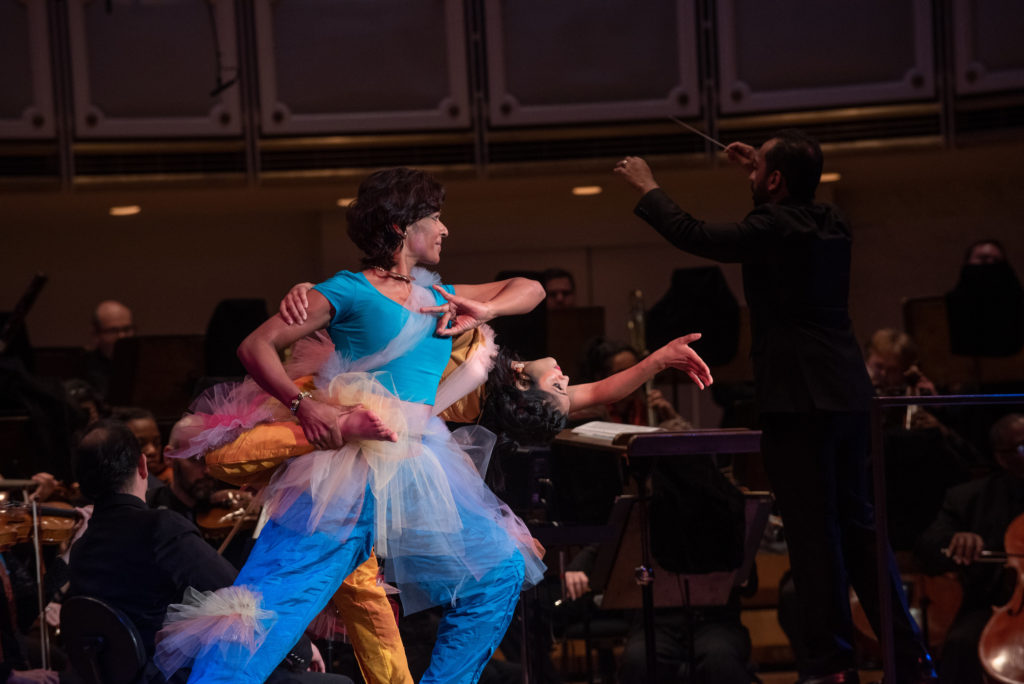
“Firebird” reimagines Stravinsky’s ballet as a dreamy Ramayana. Drawing from dance experiences of its Chicago-based artists, Bharatanatyam, ballet, and contemporary structured improvisation work together to create strong characterization. Featuring master Balinese dance artist, I Gusti Pak Ngurah Kertayuda, as Ravana. Press coverage: “Blending south Asian tradition, including its iconic costume stylings for the demon king Ravana, with western pas de deux, the dance ensemble found nearly perfect parallel beats between the stories … Chennat neatly elided it by emphasizing the dream aspects of the story, and building off Stravinsky’s eerie woodwind calls…a paring down of the epic to just five dancers allowed the choreography to suit the music. HIGHLY RECOMMENDED.” — Picture this Post


